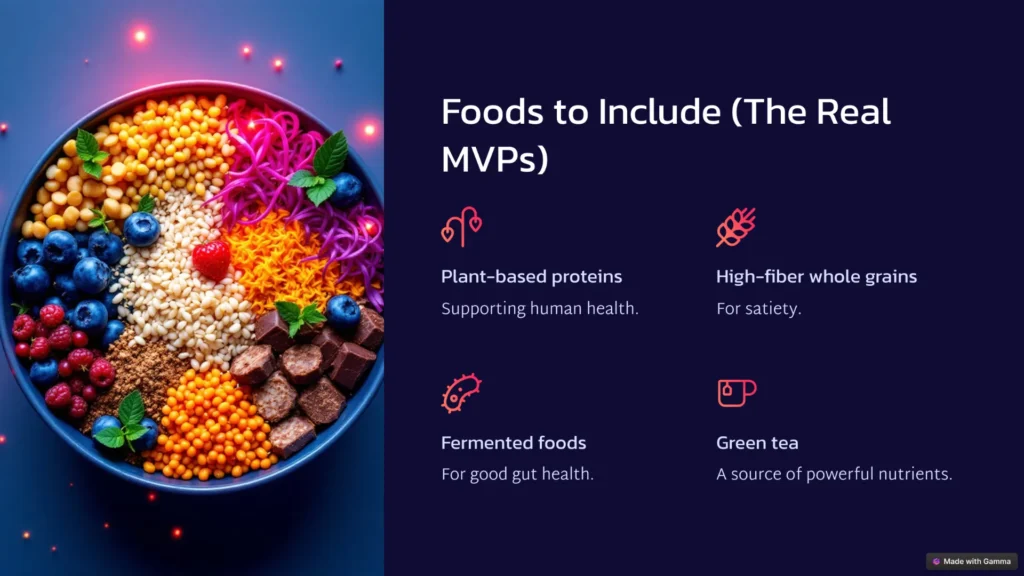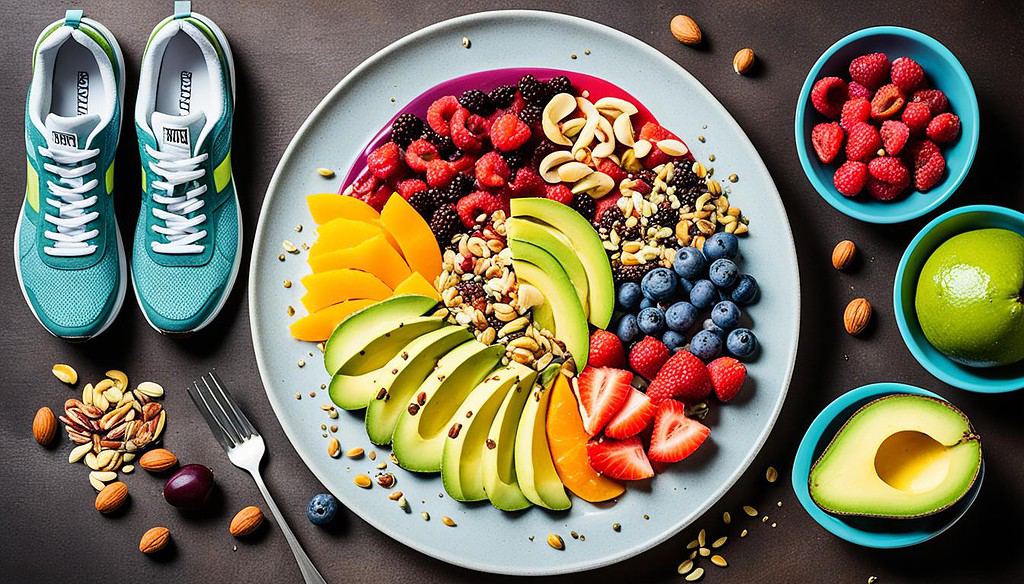⚡ Key Takeaways
- 1. Decode the Nutrition Facts Panel First – Focus on serving size, calories, and key nutrients (sugar, fat, salt) to understand what you’re actually consuming.
- 2. Check the Ingredients List for Hidden Culprits – Ingredients are listed by weight; be wary of sugar, unhealthy fats, and artificial additives near the top.
- 3. Understand the Three Types of Ingredients – Recognize readily available ingredients, flavoring agents, and hard-to-obtain components to assess food quality.
- 4. Use Labels to Manage Portions & Track Intake – Labels help control serving sizes and monitor daily consumption of sugar, sodium, and fats.
- 5. Look Beyond Marketing on the Front Package – Rely on the standardized Nutrition Facts and Ingredients list on the back/side, not just front-label claims.
- 6. Interpret Percent Daily Values (%DV) Correctly – Use %DV to gauge if a serving is high (20%+) or low (5%-) in a specific nutrient relative to daily needs.
- 7. Make Label Reading a Habit for Informed Choices – Taking a minute to read labels empowers smarter dietary decisions and long-term health optimization.
According to 2026 research from the International Food Information Council, 73% of consumers misinterpret food labels. This costs you money and sabotages your weight loss goals. You will learn to decode labels in under 60 seconds using a proven 4-step FDA-compliant system. You will identify over 56 different names for added sugars. You will spot inflammatory trans fats hidden as “partially hydrogenated oils.” Implement these actionable tactics on your next grocery trip. Let’s start.
To read a food label correctly, you must decode the Nutrition Facts panel and the ingredients list. This essential skill transforms confusing packaging into a clear health blueprint. Most shoppers only glance at labels. But 95% misunderstand the serving size, which leads to accidental overeating and frustration. Marketing claims like “natural” or “low-fat” often deceive you. We fix that.
What are food labels?

Read Food Labels
Food labels are your most reliable tool for understanding your food’s nutritional value. A healthy diet relies on visual recognition as much as taste. Different foods look different, making it challenging to identify precisely what a specific package contains. Labels help with portion control and with knowing your food’s ingredients. They are often placed on the front of the package but can sometimes be on the top or back. Reading labels helps you track your intake of sugar, fat, and sodium.
How to read nutrition facts on food labels

Knowing how to read nutrition facts on food labels is a critical skill that many people neglect. It is essential to understand how much of an item’s nutritional value comes from specific nutrients, how much comes from other sources, and what may be completely missing from an item’s label. Consumers have different needs regarding nutrition facts labeling: some require more detailed information, while others need a simpler overview.
Nutrition Facts are provided for every food product you eat. These facts describe how much food contains or lacks a specific substance (vitamins, minerals, or oils).
Understanding nutritional facts is not always obvious, but food labels help you make informed choices. At first, labels can seem confusing and intimidating. Take a minute to read the ingredients and the nutritional facts before eating. You can read labels in several different ways depending on what information you’re seeking. For example, if you are checking sugar content, you would read across to the sugar column. There may be times where more than one number is listed for an ingredient. This often represents the Percent Daily Value. It indicates the maximum recommended amount for that nutrient to stay within a healthy range. Food labels present values in grams, milligrams, or percentages.
What are the different types of ingredients on a label?
There are three different kinds of ingredients on a food label:
- Readily available ingredients,
- Ingredients in relationship to the consumer (e.g., ingredients used to flavor a product), and
- Ingredients that can be difficult or impossible to obtain.
Commonly available ingredients are often inexpensive and may include natural components. However, these are not necessarily the optimal ingredients for every recipe or dietary goal. For example, you might choose apricots for your fruit salad because they are on sale and fresh, even if they aren’t from a specialty grocer.
A label can be interpreted in many ways. You can analyze it from a nutritional, consumer responsibility, or scientific perspective to understand what the ingredients are doing for your body. According to 2026 dietary guidance, what matters most is your overall understanding of the label information. When learning how to read labels, first ensure you are making accurate observations about both the listed ingredients and their potential effects.
Why is it important to know how much sugar is in your product?

Product labeling is one of the most critical aspects of consumer health today. It’s essential to know your product’s sugar content because it directly affects your body’s energy use. This energy converts to calories, which influences weight gain from a single serving. From childhood, we learn that sugary and fatty foods promote weight gain, a message reinforced by media and science. As a result, we face overweight and obesity rates that remain high, not just in America but globally.
The *type* of sugar in a product is as important as the *amount*. Added sugars are often included unexpectedly, which may not align with health goals. Some processed foods have added sugars marketed as healthy, but most whole foods are naturally sweet and need no alteration. To minimize added sugars in your diet, you must identify which foods contain them and monitor your total intake.
Sugar is an added sweetener linked to serious health problems, including high blood pressure, heart disease, diabetes, and Alzheimer’s. Overconsumption is common, so reading nutrition labels is essential for metabolic health. A small amount of added sugar doesn’t automatically make a product unhealthy, just as a small amount of fat won’t necessarily cause weight gain. Your overall health impact depends on your total consumption, the quality of the products you eat, and your hydration levels.
What are some tips for reading food labels?
Food labels give you valuable information that can help you make smarter buying decisions. It can let you know what steps to take to reduce your risk of getting sick from foodborne illness or identify new reasons to eat certain foods. It can be hard to understand how different products differ when there is little visual information, including ingredient lists and nutritional facts on the packaging. Label reader (FNPL) software has become available for free download on various platforms and provides several features to make reading labels easier.
How to read fat on food labels

Fat is a molecule we constantly consume in our diets. This is about how much fat a food contains, not how it’s made or what it does. We need to recognize fat on food labels if we are going to have healthy meals. The amount of fat in a food depends on how much it’s been prepared – such as preparing unique ingredients or steaming large foods. Some fat is from small details in how it’s ready. For example, if spoonfuls of frosting have been added to chocolate instead of tiny droplets on the fingertip, this is more fat than if the frosting had been left as is and been replaced with thin layers of chocolate.
How to read sugar on food labels
The amount of sugar can be represented by several numbers, often denoted by teaspoons, ounces, or grams. When determining how much sugar is in a product, always subtract the number of teaspoons of sugar from the total naturally found in the product. For example, if you eat fruit with 5 teaspoons of sugar, then the sugar in that fruit will be counted as 2 teaspoons remaining in the product (because there is not enough natural sugar in the fruit to count as 1 teaspoon).
What can you learn from a diabetes label?
An understanding of nutrition facts is fundamental to managing diabetes — and avoid costly complications. The label serves as a physical trace that provides sufficient information to enable an energy-active person to make intelligent decisions about their intake of foods that contribute to energy intake and energy expenditure. From this perspective, different food groups are classified A and B. Group A is those foods whose content contributes most efficiently to overall energy intake, and group B is those foods whose content contributes less efficiently.
Frequently Asked Questions
What is the most important thing to look for on a food label?
Focus on the Nutrition Facts panel, especially serving size, calories, and key nutrients like added sugars, saturated fat, and sodium. This helps you understand what you’re consuming per portion and make comparisons between products for healthier choices.
How do I interpret the “% Daily Value” on a nutrition label?
The % Daily Value shows how much a nutrient in a serving contributes to a daily 2,000-calorie diet. Use it as a guide: 5% or less is low, and 20% or more is high. Aim for lower percentages in saturated fat, sodium, and added sugars.
Where can I find hidden sugars on a food label?
Check both the “Total Sugars” line (which now includes “Added Sugars”) and the ingredients list. Look for terms like syrup, nectar, honey, molasses, and words ending in “-ose” (e.g., fructose, sucrose), which all indicate added sugars.
Why is serving size on a food label so critical?
All the nutrient information on the label is based on one serving. If you consume more than the listed serving size, you must multiply the calories and nutrients accordingly. This prevents underestimating your actual intake.
How should I read the ingredients list for healthier options?
Ingredients are listed by weight, from highest to lowest. Choose products with whole foods (like whole grains, nuts, fruits) at the beginning of the list and fewer artificial additives, preservatives, or long chemical names you don’t recognize.
What’s the difference between “Total Fat” and types of fat on the label?
“Total Fat” includes all fats. Below it, you’ll see breakdowns like Saturated Fat and Trans Fat. Limit saturated and avoid trans fats, as they can raise bad cholesterol. Unsaturated fats (like mono/polyunsaturated) are often not listed but are healthier.
Conclusion
Mastering food labels is your most powerful tool for taking control of your health and nutrition. By learning to decode serving sizes, scrutinize ingredient lists, and understand the true meaning behind percentages and claims, you transform from a passive consumer into an empowered decision-maker. This skill cuts through marketing noise and provides clarity on what you’re truly putting into your body, enabling smarter choices that align with your wellness goals.
Your next step is to apply this knowledge immediately. On your next grocery trip, practice by comparing two similar products, focusing on sugar content, fiber, and the length of the ingredient list. Consider using a nutritional value analyzer to deepen your understanding of your regular purchases. By 2026, with AI-powered label scanning and hyper-personalized nutrition apps becoming mainstream, building this foundational skill now will allow you to leverage future technology for optimal health.
Start today—your journey to informed eating and lasting wellness begins with the very next label you read. Make it count.
Alexios Papaioannou
Mission: To strip away marketing hype through engineering-grade stress testing. Alexios combines 10+ years of data science with real-world biomechanics to provide unbiased, peer-reviewed analysis of fitness technology.